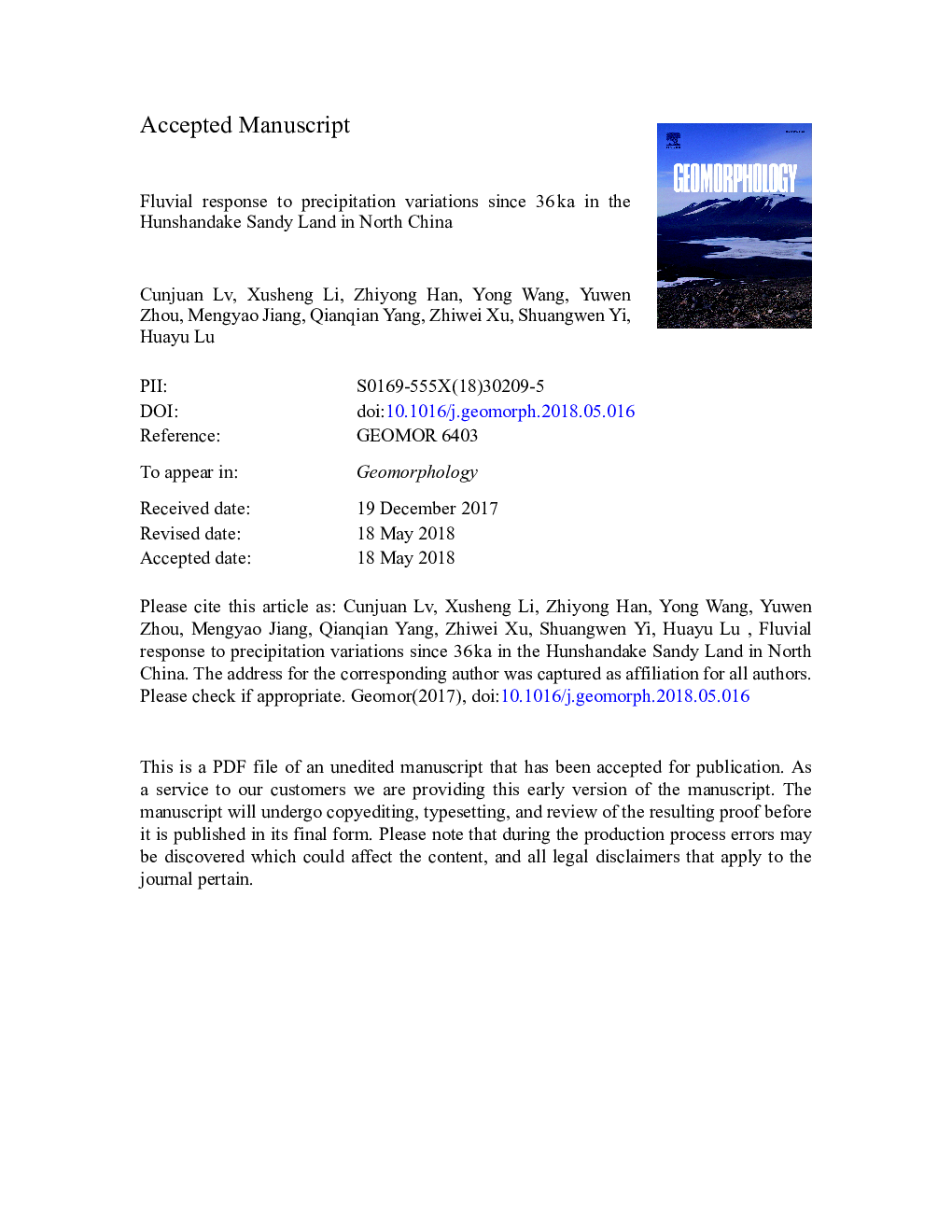| Article ID | Journal | Published Year | Pages | File Type |
|---|---|---|---|---|
| 8907968 | Geomorphology | 2018 | 32 Pages |
Abstract
The Hunshandake Sandy Land, which is highly sensitive to climate change, is located in North China along the margins of the area influenced by the East Asian monsoon. The upper reach of the Xilamulun River, which drains the Hunshandake Sandy Land, provides an opportunity to test the response of a river landform within a sandy region to climate change. We investigated terraces at 4 sites along a 38-km-long stretch and performed OSL dating on 26 terraces. The dating results revealed 23 terraces with unsaturated ages ranging from 0.3â¯ka to 36.2â¯ka. The observed relationship between the terrace heights and ages is abnormal, i.e., the terrace age does not increase with the terrace height. In this case, aeolian and fluvial interactions were analyzed, and a precipitation-dominated terrace formation model was developed. Higher terraces formed when the riverbed aggraded due to decreased sediment discharge and increased aeolian sand input during a period of reduced precipitation. In contrast, lower terraces developed when the riverbed eroded during a period of enhanced precipitation. We conclude that the terraces along this Hunshandake Sandy Land river respond to precipitation changes, even in the absence of background uplift.
Related Topics
Physical Sciences and Engineering
Earth and Planetary Sciences
Earth-Surface Processes
Authors
Cunjuan Lv, Xusheng Li, Zhiyong Han, Yong Wang, Yuwen Zhou, Mengyao Jiang, Qianqian Yang, Zhiwei Xu, Shuangwen Yi, Huayu Lu,
